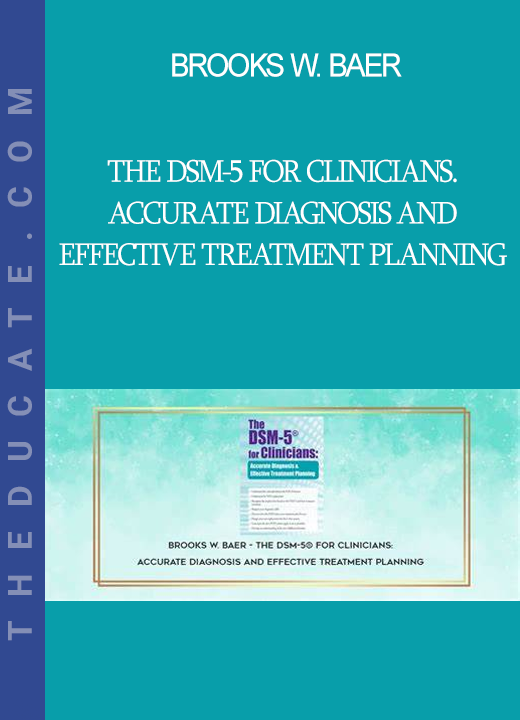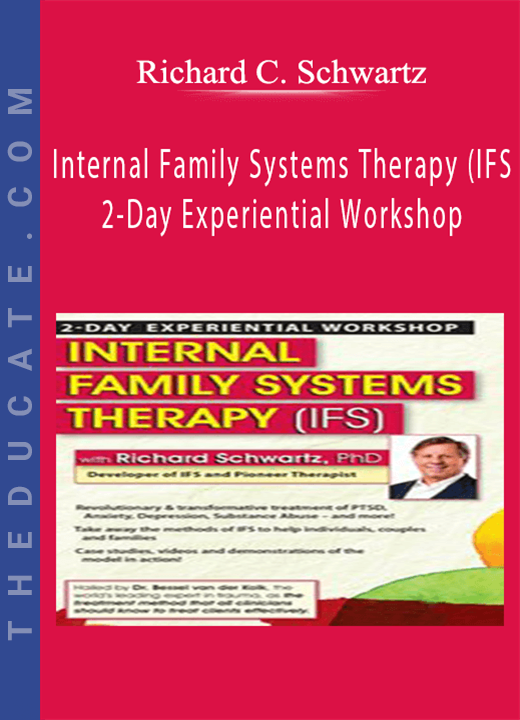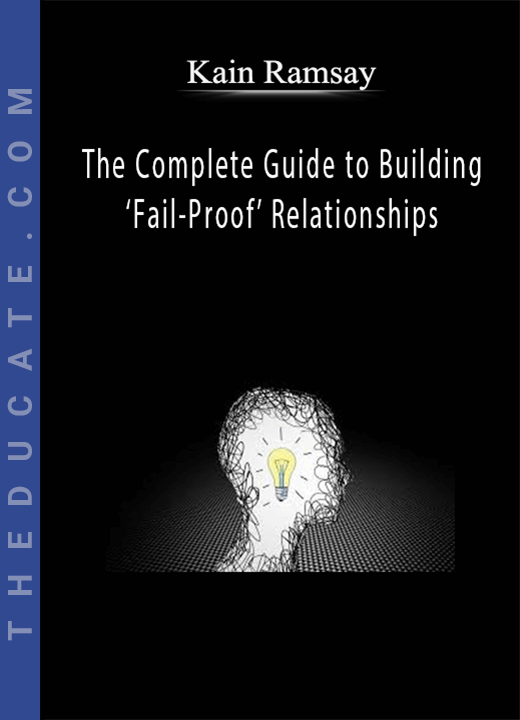Description
The DSM-5® for Clinicians: Accurate Diagnosis and Effective Treatment Planning – Brooks W. Baer
- Understand the rationale behind the ICD-10 format
- Understand the NOS replacement
- Recognize the implicit bias found in the DSM-5 and how it impacts treatment
- Sharpen your diagnostic skills
- Discover how the DSM writes your treatment plan for you
- Design your own replacement for the 5-Axis system
- Learn how the new PTSD criteria apply to us as providers
- Develop an understanding of the new childhood disorders
The DSM® is possibly the most underutilized tool in mental health. Many clinicians see it as a necessary evil that must be learned in order to bill for services. However, the DSM-5® can be an extremely valuable tool that helps you sharpen your diagnostic skills while bringing clarity and definition to your treatment plans.
This seminar will teach you how to use your DSM® in a way that maximizes your ability to bring healing and growth to your patients. We will discuss the rationale behind all of the major changes, cover the new disorders in detail, and develop a solid clinical understanding of how to address all previously established disorders. This seminar goes beyond simply reviewing lists of symptoms; it explains why the symptoms are on the list and what can be done to help resolve each symptom. Explore the etiology of the disorders and learn to recognize which disorders are caused by nature, which are caused by nurture, and which are caused by adverse life events.
This seminar will help you stand apart from the crowd, as you learn to think about mental disorders in a new way. You will come to understand that mental illnesses are the result of coping and adaptation strategies that have too much intensity. Our job is to find ways to turn that intensity down, so our patients can reach their maximum potential. This recording is guaranteed to increase your understanding of mental illness and equip you to be a more effective therapist.
- Explain the foundation of the major mental illnesses.
- Produce accurate mental illness diagnoses.
- Code using the ICD-10 format for billing correctly.
- Implement a systematic way to conduct an intake interview designed to recognize all mental illnesses.
- Identify areas where the DSM-5® is lacking and why.
- Describe the role the DSM-5® plays in the development of treatment plans.
- Develop skills needed to arrive at a differential diagnosis.
- Construct accurate diagnoses in children.
GET THE DSM-5® FOR CLINICIANS: ACCURATE DIAGNOSIS AND EFFECTIVE TREATMENT PLANNING OF AUTHOR BROOKS W. BAER
Changes to the DSM®
- Loss of the 5 Axis format
- Loss of the NOS category
- The bias of the DSM®
- The new billing format
Nature versus Nurture
- What we can change and what we can’t
- What requires medication
Clinical Disorders and Etiology
- Neurodevelopmental disorders
- Schizophrenia spectrum and other psychotic disorders
- Bipolar and related disorders
- Depressive disorders
- Anxiety disorders
- Obsessive-compulsive and related disorders
- Eating disorders
Trauma and Stressor Related Disorders
Personality Disorders and Etiology
- Cluster A
- Cluster B
- Cluster C
Medical Conditions that Effect Mental Health
- Depression
- Anxiety
- Psychosis
Use of the Cultural Formulation Interview
- How to accurately identify psycho/social stressors
What to do in Place of the GAF Score
- Severity specifiers
Steps to an Efficient and Accurate Diagnosis
- 5 take-home forms to assist you
Disorders Common to Children and Adolescents
- Attention/Deficient Disorder
- Reactive Attachment Disorder
- Disinhibited Social Engagement Disorder
Substance-related and Addictive Disorders
- Review of common criteria
- Review of new rules
How to use the DSM-5® in your Treatment Plans






Reviews
There are no reviews yet.